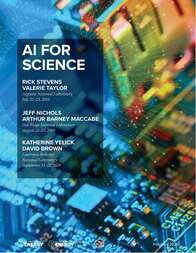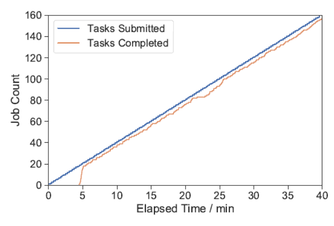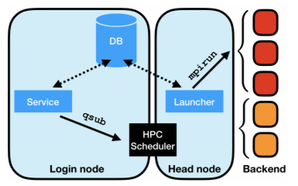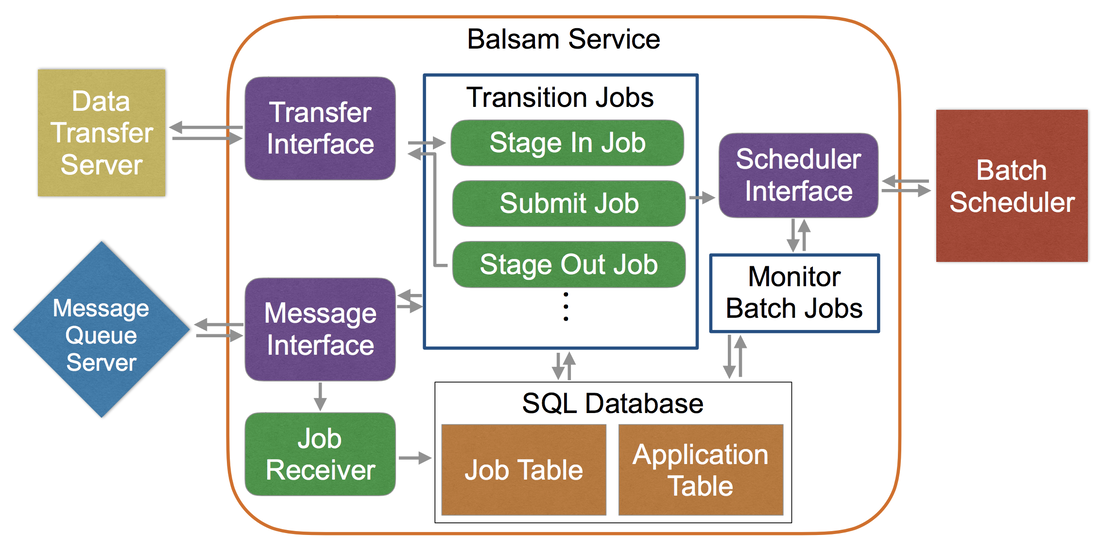Publications
Porting CMS Heterogeneous Pixel Reconstruction to Kokkos
In this paper we use heterogeneous pixel reconstruction code from the CMS experiment at the CERNL LHC as a realistic use case of a GPU-targeting HEP reconstruction software, and report experience from prototyping a portable version of it using Kokkos. The development was done in a standalone program that attempts to model many of the complexities of a HEP data processing framework such as CMSSW. We also compare the achieved event processing throughput to the original CUDA code and a CPU version of it.
August 2021
Link to Paper
In this paper we use heterogeneous pixel reconstruction code from the CMS experiment at the CERNL LHC as a realistic use case of a GPU-targeting HEP reconstruction software, and report experience from prototyping a portable version of it using Kokkos. The development was done in a standalone program that attempts to model many of the complexities of a HEP data processing framework such as CMSSW. We also compare the achieved event processing throughput to the original CUDA code and a CPU version of it.
August 2021
Link to Paper
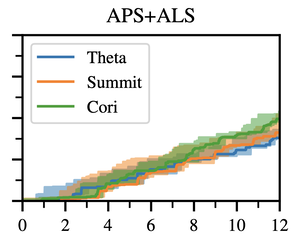
Toward Real-time Analysis of Experimental Science Workloads on Geographically Distributed Supercomputers
While next-generation exascale supercomputers promise strong support for I/O-intensive workflows, HPC remains largely untapped by live experiments, because data transfers and disparate batch-queueing policies are prohibitive when faced with scarce instrument time. To bridge this divide, we introduce Balsam
June 2021
Link to Paper
While next-generation exascale supercomputers promise strong support for I/O-intensive workflows, HPC remains largely untapped by live experiments, because data transfers and disparate batch-queueing policies are prohibitive when faced with scarce instrument time. To bridge this divide, we introduce Balsam
June 2021
Link to Paper

Deep Reinforcement Agent for Scheduling in HPC
HPC scheduling agent named DRAS (Deep Reinforcement Agent for Scheduling) by leveraging deep reinforcement learning. DRAS is built on a novel, hierarchical neural network incorporating special HPC scheduling features such as resource reservation and backfilling.
April 2021
Link to Paper
HPC scheduling agent named DRAS (Deep Reinforcement Agent for Scheduling) by leveraging deep reinforcement learning. DRAS is built on a novel, hierarchical neural network incorporating special HPC scheduling features such as resource reservation and backfilling.
April 2021
Link to Paper
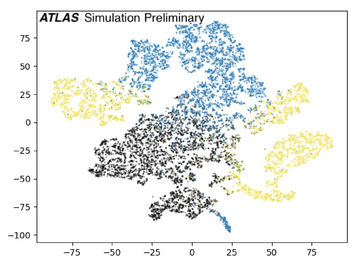
Physics Object Localization with Point Cloud Segmentation Networks
Performing semantic segmentation on low-level ATLAS detector simulation using Point Cloud and Graph Neural Networks.
March 2021
Link to Paper
Link to Public Dataset
Performing semantic segmentation on low-level ATLAS detector simulation using Point Cloud and Graph Neural Networks.
March 2021
Link to Paper
Link to Public Dataset
HL-LHC Computing Review Stage-2, Common Software Projects: Event Generators
This paper has been prepared by the HEP Software Foundation (HSF) Physics Event Generator Working Group (WG), as an input to the second phase of the LHCC review of High-Luminosity LHC (HL-LHC) computing, which is due to take place in November 2021.
September 2021
Link to Paper
This paper has been prepared by the HEP Software Foundation (HSF) Physics Event Generator Working Group (WG), as an input to the second phase of the LHCC review of High-Luminosity LHC (HL-LHC) computing, which is due to take place in November 2021.
September 2021
Link to Paper
The Department of Energy: AI For Science ReportReport that envisions the DOE Artificial Intelligence research landscape for the next 10-20 years.
March 2020 Link to Report |
Balsam: Near Real-Time Experimental Data Analysis on SupercomputersSupercomputing 2019: Workshop on Large-scale Experiment-in-the-Loop Computing (XLOOP)
Link to Paper |
Balsam: Automated Scheduling and Execution of Dynamic, Data-Intensive HPC Workflows |
Building and Using Containers on HPCs for the ATLAS ExperimentIntl. Conf. on Computing in High Energy and Nuclear Physics (CHEP)
July 2018, Sofia, Bulgaria Link to Paper |
An Edge Service for Managing HPC Workflows |
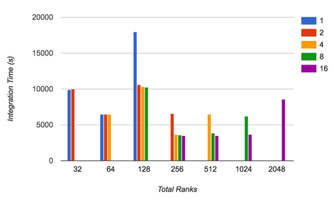
Challenges in scaling NLO generators to leadership computers
Journal of Physics: Conference Series (Volueme 898)
22nd International Conference on Computing in High Energy and Nuclear Physics (CHEP2016)
10–14 October 2016, San Francisco, USA
Link to Paper
Journal of Physics: Conference Series (Volueme 898)
22nd International Conference on Computing in High Energy and Nuclear Physics (CHEP2016)
10–14 October 2016, San Francisco, USA
Link to Paper

Precision searches in dijets at the HL-LHC and HE-LHC
Journal of Instrumentation (Volume 13)
May 2018
Link to Paper
Journal of Instrumentation (Volume 13)
May 2018
Link to Paper
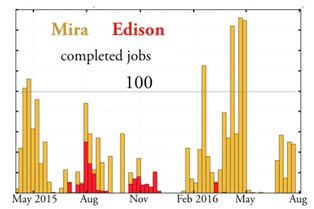
Developments in Architectures and Services for using High Performance Computing in Energy Frontier Experiments
Proceedings of Science (Volume 178)
38th International Conference on High Energy Physics
3-10 August 2016, Chicago, USA
Link to Paper
Proceedings of Science (Volume 178)
38th International Conference on High Energy Physics
3-10 August 2016, Chicago, USA
Link to Paper
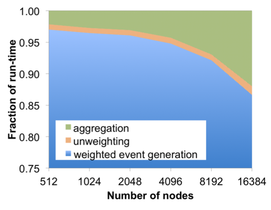
Adapting the serial Alpgen parton-interaction generator to simulate LHC collisions on millions of parallel threads
Computer Physics Communications
Volume 210, January 2017
Link to Paper
Computer Physics Communications
Volume 210, January 2017
Link to Paper

Simulation of LHC events on a millions threads
Journal of Physics: Conference Series (Volume 664)
21st International Conference on Computing in High Energy and Nuclear Physics (CHEP2015)
13-17 April 2015, Okinawa, Japan
Link to Paper
Journal of Physics: Conference Series (Volume 664)
21st International Conference on Computing in High Energy and Nuclear Physics (CHEP2015)
13-17 April 2015, Okinawa, Japan
Link to Paper
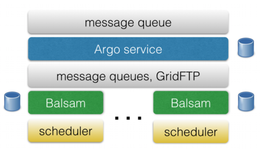
Achieving production-level use of HEP software at the Argonne Leadership Computing Facility
Journal of Physics: Conference Series (Volume 664)
21st International Conference on Computing in High Energy and Nuclear Physics (CHEP2015)
13-17 April 2015, Okinawa, Japan
Link to Paper
Journal of Physics: Conference Series (Volume 664)
21st International Conference on Computing in High Energy and Nuclear Physics (CHEP2015)
13-17 April 2015, Okinawa, Japan
Link to Paper
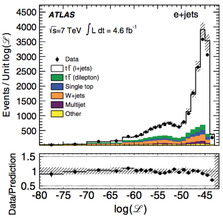
Measurements of normalized differential cross-sections for ttbar production in pp collisions at sqrt(s) = 7TeV using the ATLAS detector
Phys. Rev. D 90, 072004
Published 13 October 2014
Link to Paper
Phys. Rev. D 90, 072004
Published 13 October 2014
Link to Paper
- “ATLAS Level-1 Calorimeter Trigger: PreProcessor Implementation and Performance,” J.T. Childers, et al., JInst. 7 P12008, 2012
- “Performance of the Electron and Photon Trigger in p-p Collisions at sqrt(s) = 7 TeV,” J.T. Childers and A. Tricoli (for ATLAS Collaboration), ATLAS-CONF-2011-114, 2011
- “ATLAS level-1 calorimeter trigger hardware: initial timing and energy calibration,” J.T. Childers (for ATLAS Collaboration), J. Phys.: Conf. Ser. 293, 2011
- “ATLAS Level-1 Calorimeter Trigger: Timing Calibration with 2009 LHC Beam Splashes,” J.T. Childers (for ATLAS Collaboration), ATL-DAQ-PUB-2010-001, 2010
- “Expected boron to carbon at TeV energies,” J.T. Childers and M.A. DuVernois, Proc. 30th Int. Cosmic Ray Conf., Merida, Vol. 2, pgs. 183-186, 2008
- “Timing charge and position analysis from the first CREAM flight,” J.T. Childers, Proc. 30th Int. Cosmic Ray Conf., Merida, Vol. 2, pgs. 373-376, 2008
